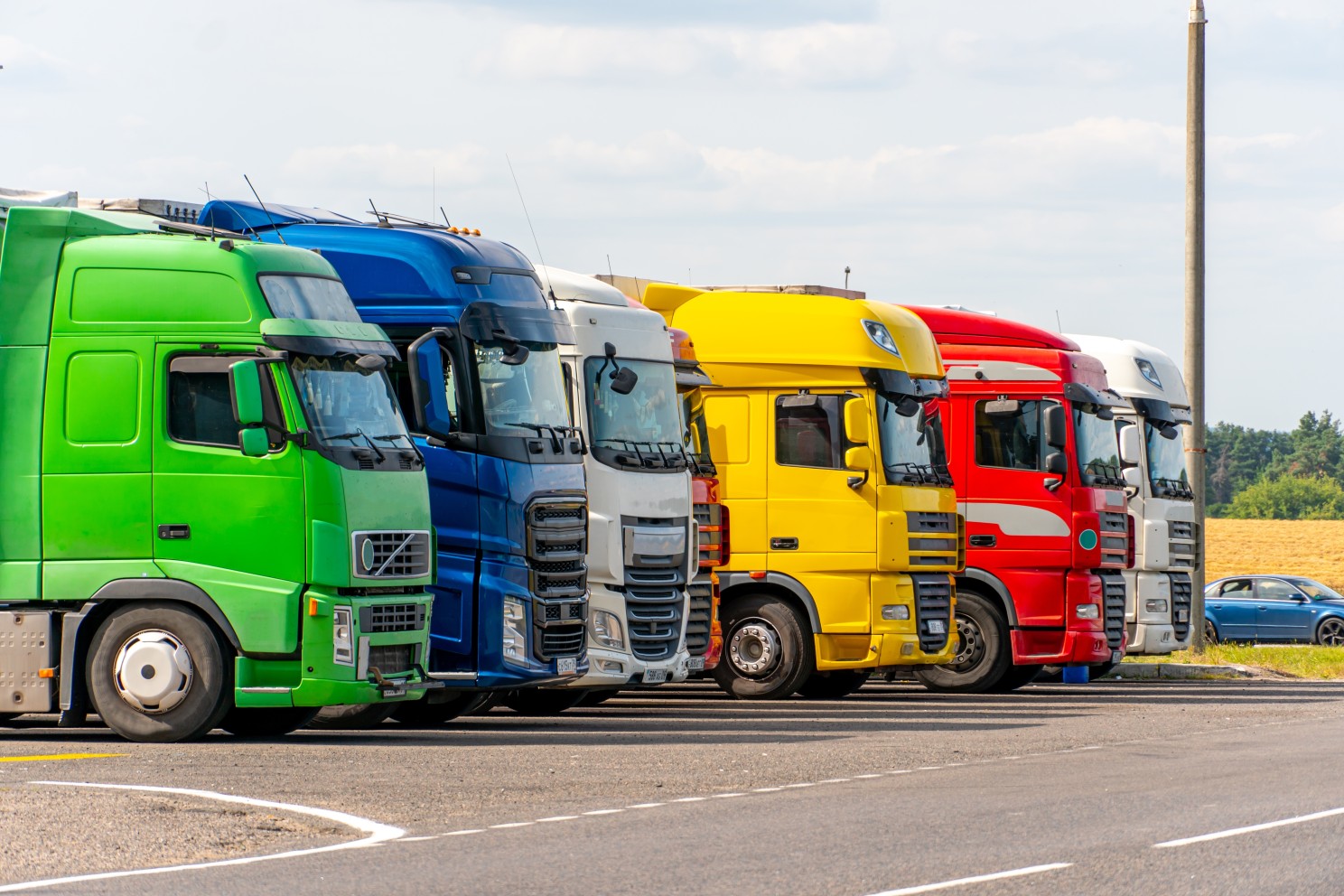
Susie Jones
Zgodbe tovornjakarjev: zgodbe z odprtih cest
Ustvarjeno: 22. 08. 2024
•
Posodobljeno: 22. 08. 2024
Želimo osvetliti skupnost tovornjakarjev in spoznati ljudi za volanom.
Od helikopterjev, ki pristanejo pred njihovimi tovornjaki, do avtomobilov na napačni strani avtoceste - izvedite več o voznikih, ki dostavljajo vaše blago.
Alan
Alan vozi že 23 let in se je za delo v panogi odločil, ko je poslušal pesmi Allyja Thomsona o vožnji tovornjaka. Na vprašanje, kaj mu je pri tem delu najbolj všeč, odgovarja, da je to "samota, ki jo prinaša vožnja tovornjaka, saj je popolnoma ločena od domačega življenja".
Najraje ima tovornjake Volvo, saj potuje po Združenem kraljestvu in prevaža Amazonovo blago. Pravi, da je prepeljal veliko zanimivih izdelkov, "izbira je neomejena - pomislite na vse, kar prodaja Amazon."
Vozniki, ki parkirajo čez noč, se med izostankom težko zabavajo. Vendar pa so izkušeni vozniki, kot je Alan, svojo večerno rutino izpopolnili do potankosti. Pravi, da "rad gleda Sky TV prek iPada", ko je parkiran čez noč.
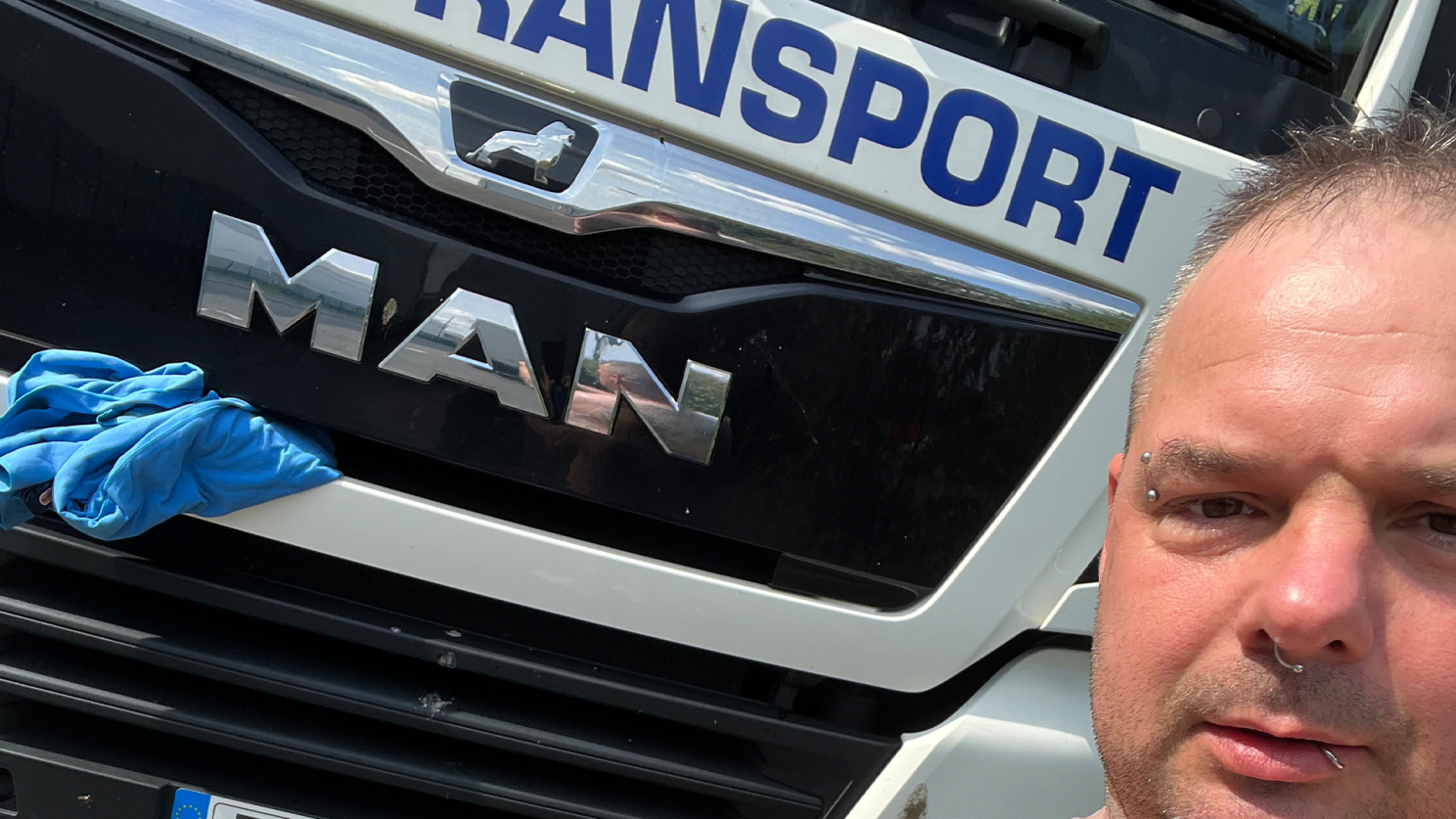
Za voznike, ki si prizadevajo, da bi se za volanom zabavali, smo pripravili seznam načinov, s katerimi lahko preprečite, da bi se začelo dolgočasiti (https://www.linkedin.com/pulse/you-bored-road-snap-account%3FtrackingId=WdH0FfVaRlqIItFQ9kHa5A%253D%253D/?trackingId=WdH0FfVaRlqIItFQ9kHa5A%3D%3D).
Čeprav se dolge ure na poti marsikomu zdijo monotone, Alan pojasnjuje, da ga vedno nekaj drži pokonci.
"Mislim, da je najbolj nora stvar, ki sem jo videl med vožnjo, helikopter, ki je pristal tik pred mano," pojasnjuje - daleč od monotonega slovesa, ki je to panogo spremljal desetletja.
Alan, ki ima za seboj 23 let dela v tej panogi, je ponudil nekaj nasvetov, s katerimi bodo vaši zobje na potovanjih ostali sveži.
Pojasnjuje: "Vsakemu, ki se šele uvaja v to panogo, bi svetoval, naj ne pozabi, da je zobna ščetka vedno napolnjena."
Richard
Richard je pred 36 leti začel svojo poklicno pot v panogi tovornega prometa in se nikoli ni ozrl nazaj. Ko se je pridružil starejšima bratoma in pomagal pri dostavi blaga po Združenem kraljestvu, se je navdušil za vožnjo.
"Rad dobim tovor in se odpravim na pot. Sam odločam, kdaj bom imel odmor in kje bom parkiral. Biti na cesti in potovati po vsem Združenem kraljestvu je čudovito," pojasnjuje.
V svoji karieri ga je življenje na cesti pripeljalo do Milana v Italiji, kar je naporno potovanje tudi za najbolj izkušene voznike. Na vprašanje, kako se na potovanjih zabava, odgovarja: "Med počitkom rad poslušam glasbo in gledam filme."
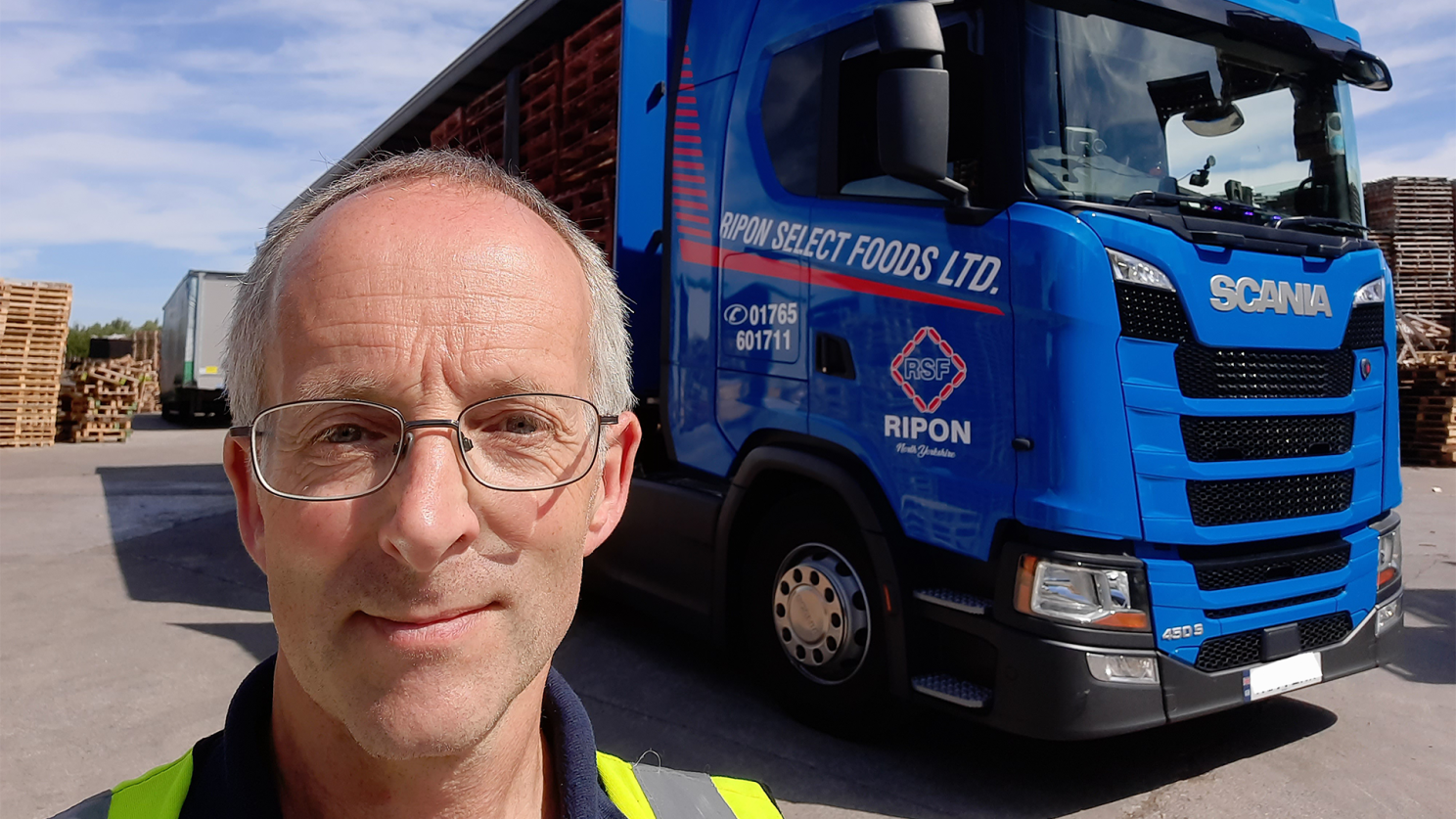
Najboljši tovornjak za to? "To mora biti Scania Next Generation 450S," pravi.
Richard je v 30 letih dela v panogi doživel veliko norih zgodb in nenavadnih dostav: "Videl sem avto, ki je vozil v napačno smer po avtocesti, ko je zapeljal z izvoza. Najzanimivejša stvar, ki sem jo imel v zadnjem delu tovornjaka, je bila povorka na dan svetega Vilfreda."
Čeprav Richard še vedno obožuje odprto cesto, pravi, da ima to včasih svojo ceno. Ponuja odličen vpogled v realnost tega poklica in nasvete za tiste, ki se želijo pridružiti tej panogi.
"Dobro premislite, ali je to prava poklicna pot za vas. Pričakujte dolge ure in veliko družinskega življenja."
Sean
Ker je odraščal v družini voznikov, je Sean prevozništvo dobil v kri, zato je pred 20 leti sedel za volan in nadaljeval svojo kariero v tovornem prometu.
Delo prinaša številne ugodnosti, vendar je Seanu najbolj všeč svoboda, ki jo ponuja. Ta svoboda ga je pripeljala vse do Škotske, kjer je opravljal šesttedensko službo. Na teh dolgih potovanjih se zabava s telefoniranjem prijateljem in gledanjem televizije.
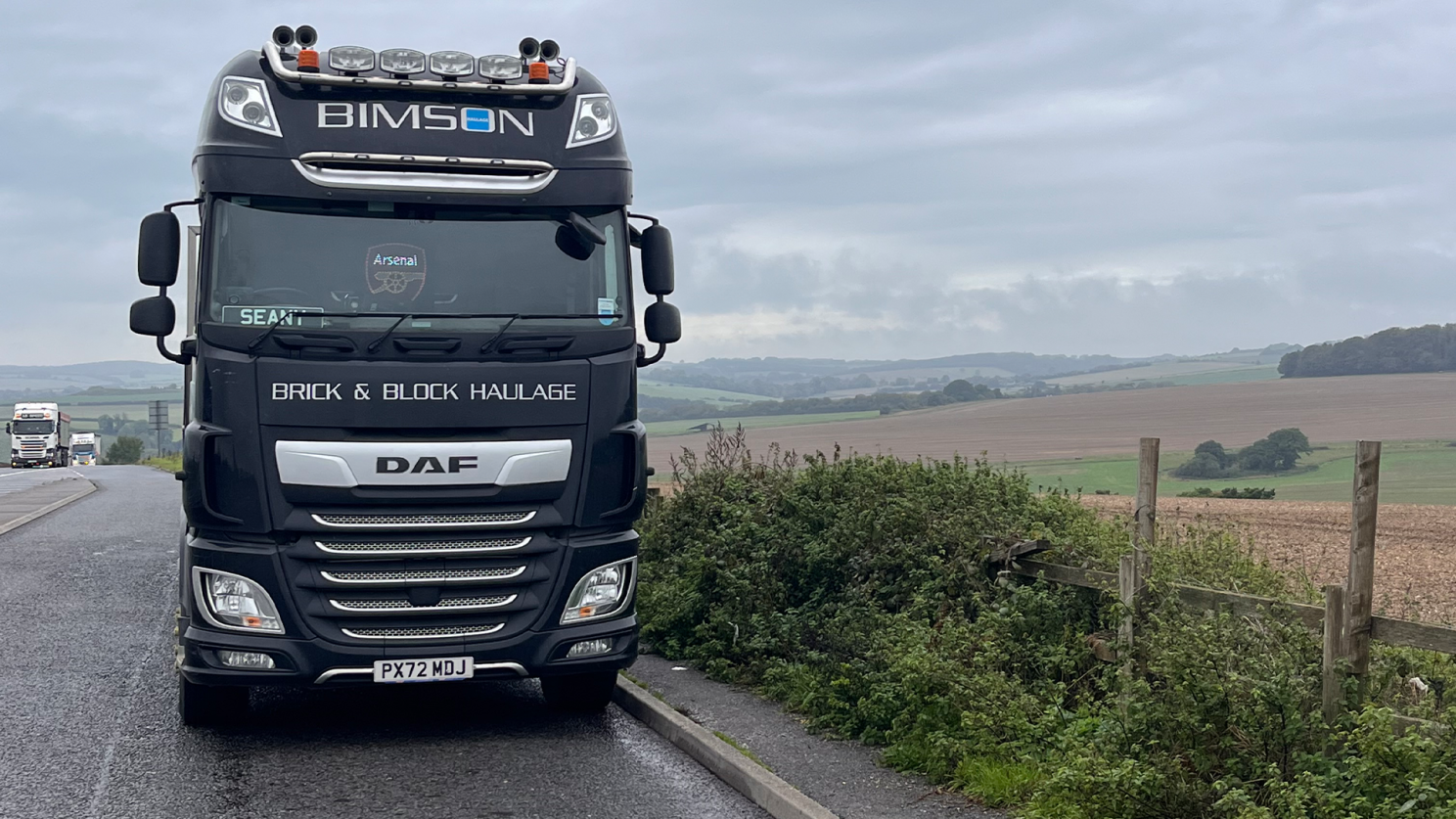
Poleg tega so postajališča za tovornjake za Seana igrala ključno vlogo v boju proti izoliranosti, ki jo prinaša vožnja. Na postajališčih za tovornjake, ki so pogosto polna življenja, lahko Sean na svojih potovanjih nadoknadi zamujeno s prijatelji.
Ti postanki so odlična priložnost za poslušanje norih zgodb drugih voznikov tovornjakov. Podobno kot Richard je tudi Sean na svojih potovanjih videl najbolj nenavadno stvar, ki je bila "avto, ki je v temi peljal v napačno smer po avtocesti" - zgodba, ki je med tovornjakarji vse prepogosta.
DAF XF 530 je Seanov tovornjak za prevoz gradbenega materiala po Združenem kraljestvu. Vsem, ki si želijo delati v tovornem prometu, svetuje: "Preprosto se odločite za to!"
Dave
Dave že 30 let vozi tovornjake in je prepotoval Dansko in Španijo. Kadar ne potuje s svojim najljubšim tovornjakom Volvo FH, v udobju svoje kabine rad gleda telenovele.
"Obnašanje nekaterih voznikov avtomobilov mi je dalo nekaj norih zgodb za pripovedovanje," pojasnjuje. Ko smo Dava vprašali o najzanimivejši stvari, ki jo je imel na zadnji klopi svojega tovornjaka, je ostal skrivnosten - "to je stroga skrivnost," pravi.
Po 30 letih prevoza blaga se je Dave naučil nekaj stvari o svetu tovornega prometa. Tistim, ki želijo začeti kariero v tej panogi, svetuje: "Poskrbite, da se boste za nekaj specializirali."
Alastair
Alastair je relativno novinec v panogi in se je odločil, da bo po upokojitvi nadaljeval kariero voznika tovornjaka, da bi bil zaposlen. Po petih letih dela v tem poklicu najbolj uživa v njegovi raznolikosti.
V tem času je Alastair potoval po Združenem kraljestvu in Evropi. "Potoval sem v Inverness, Kopenhagen, Lizbono, Budimpešto in Rim," pravi.
Da bi preprečil dolgčas, Alastair rad posluša "Radio 4, LBC in 5 Live".
Na potovanjih po Evropi je bil priča marsikateremu nenavadnemu vedenju drugih udeležencev v prometu. Vendar pa je moral bližje domu s svojim tovornjakom manevrirati med "demonstracijami v Londonu". To je bila verjetno najbolj nora stvar, ki sem jo doživel," pojasnjuje.
Za ljubitelje agenta 007 Alastair pove, kako je moral prepeljati nekaj strogo zaupnih predmetov.
"Najzanimivejši predmet, ki sem ga imel na zadnjem delu tovornjaka, so bili verjetno razstavni predmeti Jamesa Bonda," pravi.
Čeprav Alastair v tej panogi ni dolgo, ima nekaj besed za tiste, ki so v njej šele na začetku.
"Nekomu, ki razmišlja o vstopu v svet tovornega prometa, bi svetoval, naj ostane miren."
Sean V
Seanova ljubezen do ceste izvira iz številnih poletnih počitnic, ki jih je preživel z očetom na potovanju s tovornjakom. Po 30 letih vožnje je njegova ljubezen do vožnje še vedno močna.
"Najraje imam, ko vidim vse lepe kraje v Združenem kraljestvu in Evropi," pojasnjuje. To je delo, ki ga je popeljalo na različne destinacije, med katerimi je najdlje potoval v Rim.
Ko ne raziskuje mest, se Sean najraje zabava z gledanjem televizije, uporabo iPada in do nedavnega tudi z igranjem iger v udobju lastne kabine.
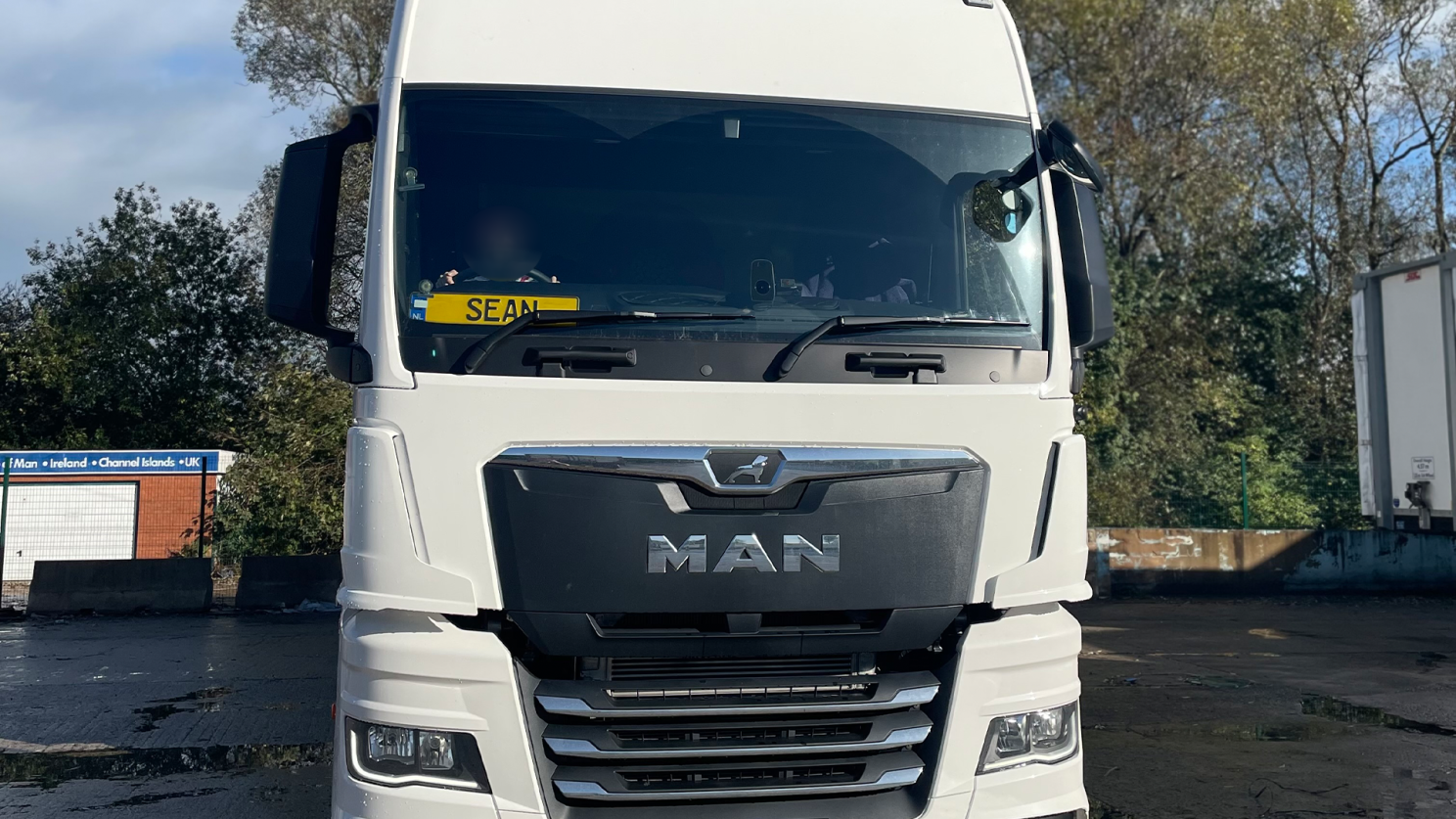
Najbolj nora stvar, ki ji je bil priča na poti?
Na žalost je Sean drugič priča pogledu, ki je med vozniki tovornjakov vse prepogost - "avtomobilu, ki po avtocesti vozi v napačno smer," pojasnjuje.
Sean v svoji 30-letni karieri pravi, da je najraje vozil tovornjake DAF, najzanimivejši predmet, ki ga je prevažal, pa je bila "specializirana medicinska oprema".
Seanova ljubezen do industrije odtehta nekatere negativne vidike dela. Tistim, ki želijo začeti svojo kariero v panogi tovornega prometa, pa želi ponuditi te modre besede:
"Če razmišljate o tem, da bi se pridružili tej panogi, pričakujte, da boste delali več ur."
Prijavite se v SNAP še danes
SNAP vam olajša življenje, saj vas poveže z našo široko mrežo storitev cestnega prevoza. [Prijavite se še danes.] (https://snapacc.com/sign-up/)



